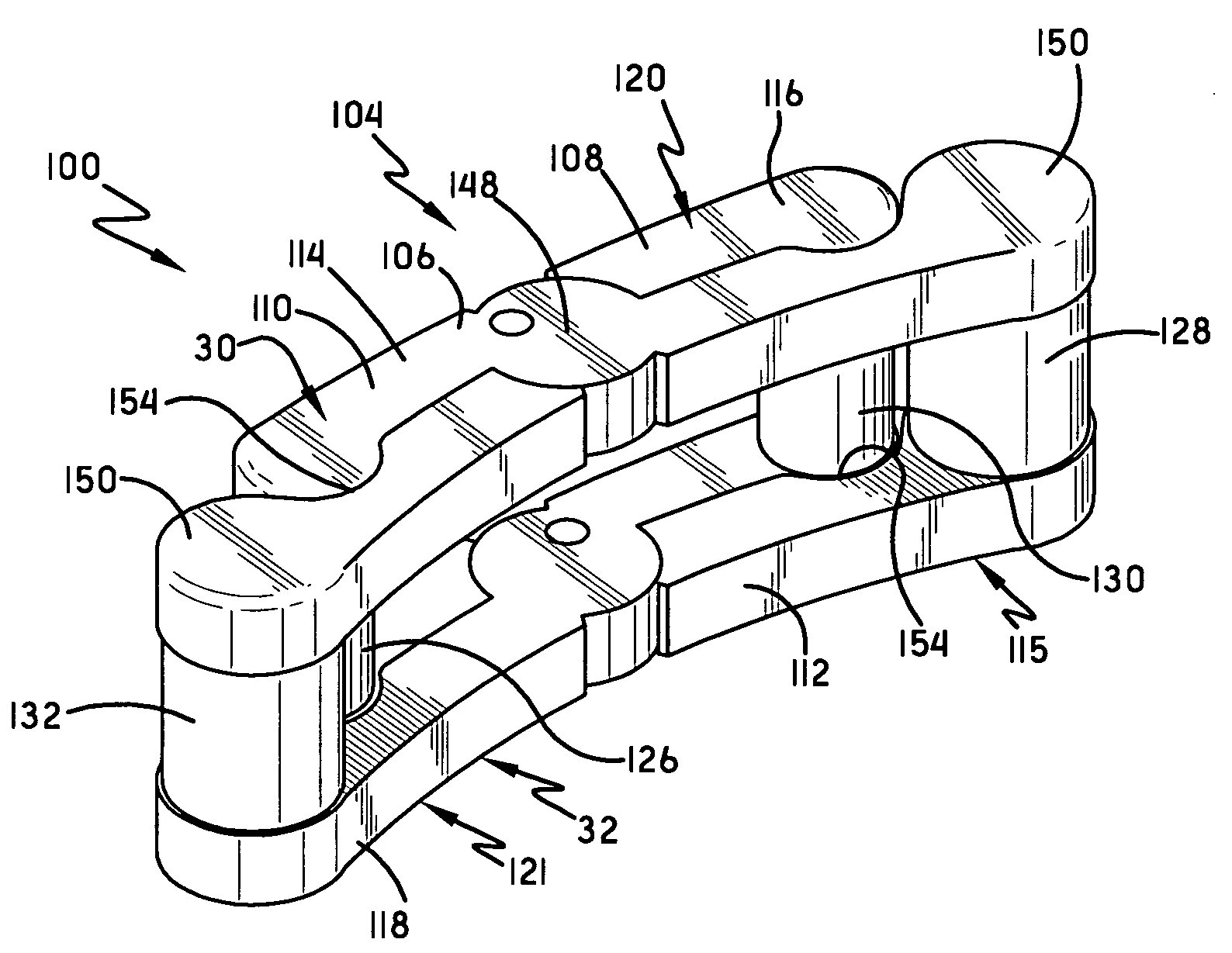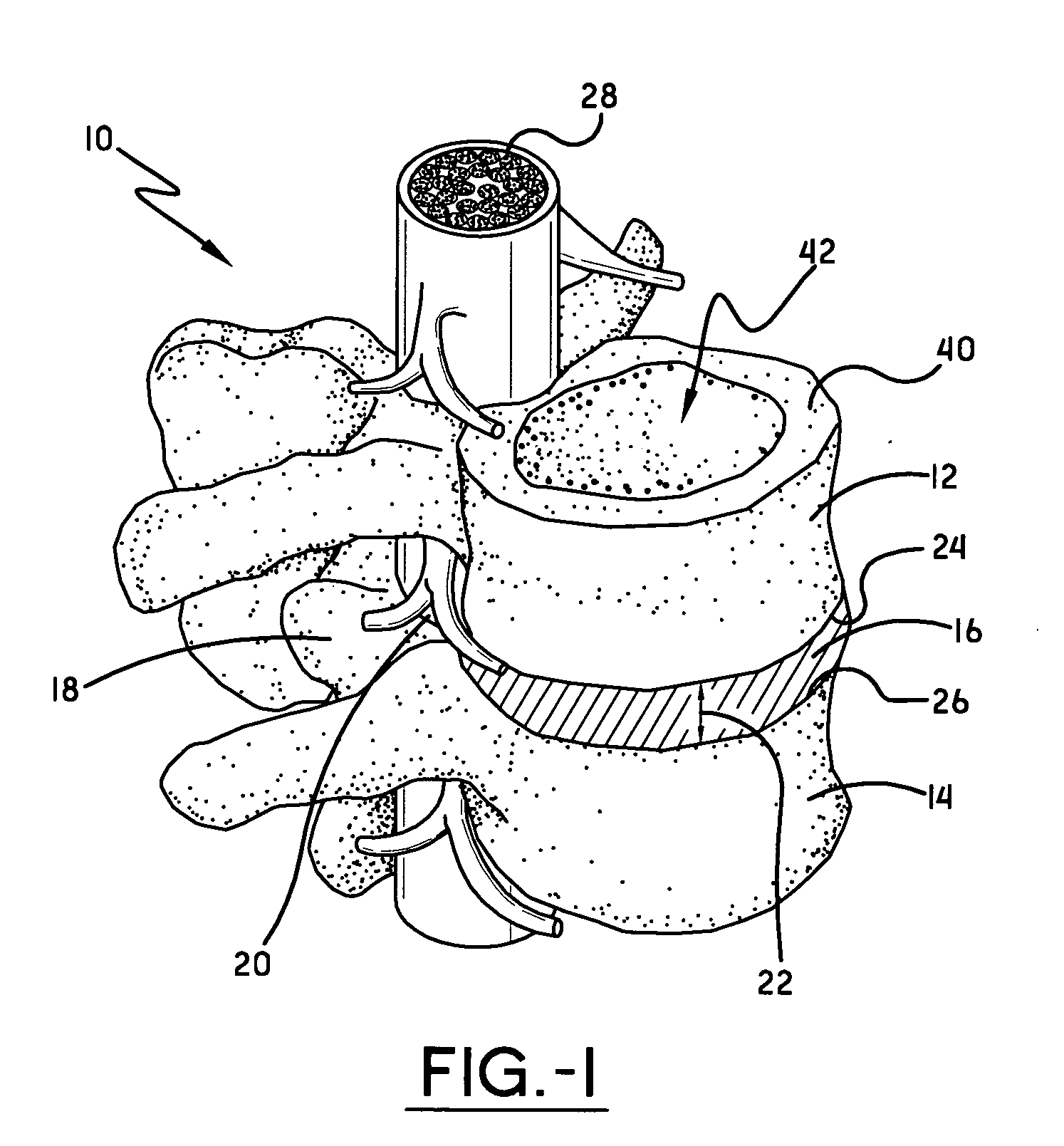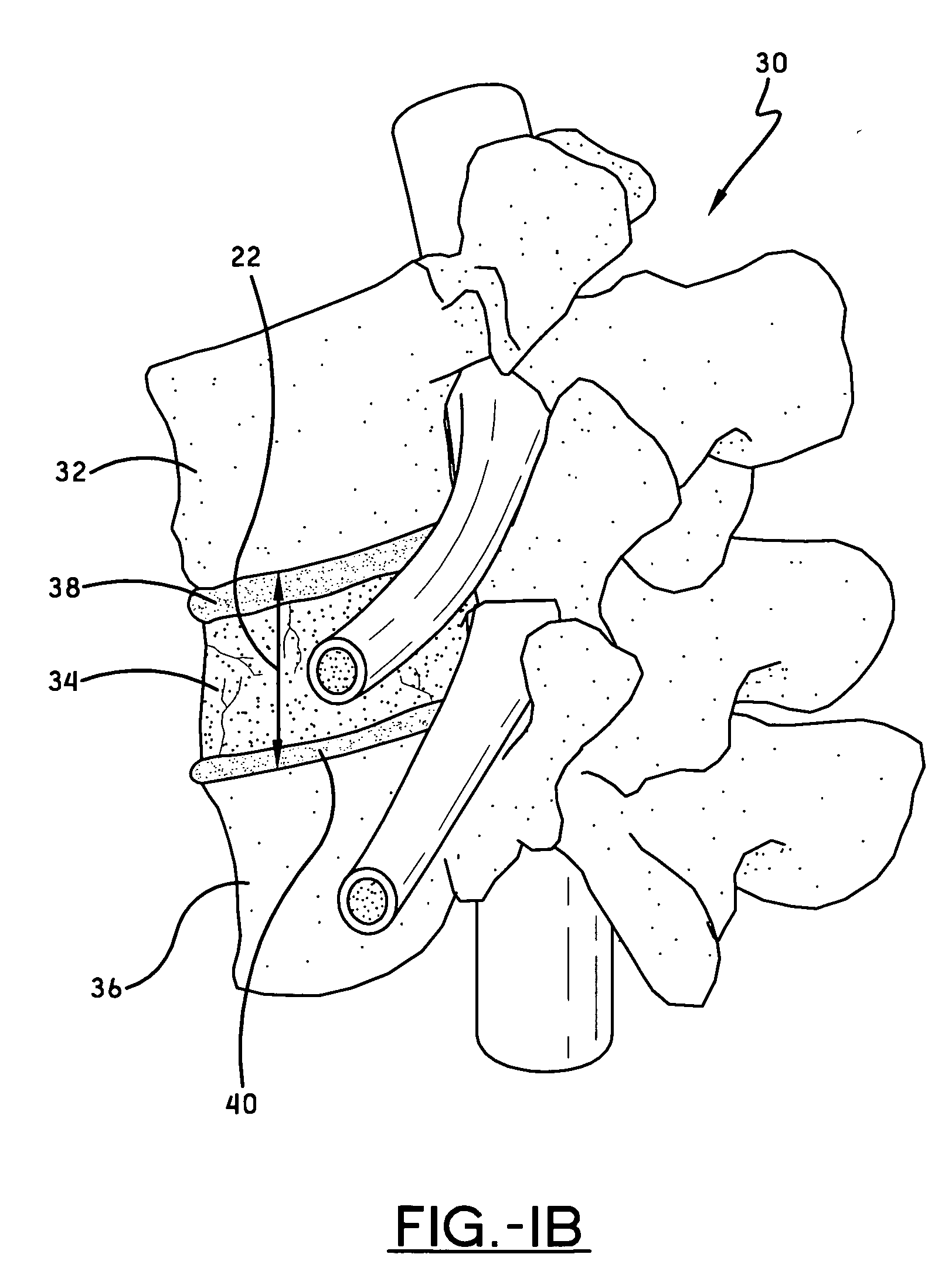Spine surgery method and motion preserving implant
a technology of motion preservation and spine surgery, applied in the field of spine surgery, can solve the problems of reducing surgeon reducing the surgeon's visualization of the surgical site, and affecting the operation efficiency of the surgeon, so as to maximize the surface area of boney ingrowth and bone graft-host contact, and enhance the visualization of bone graft-vertebral. the effect of enhancing the visualization
- Summary
- Abstract
- Description
- Claims
- Application Information
AI Technical Summary
Benefits of technology
Problems solved by technology
Method used
Image
Examples
Embodiment Construction
[0071]Referring now to the drawings wherein the showings are for purposes of illustrating embodiments of the invention only and not for purposes of limiting the same, the implants of this invention may be inserted within and, in some embodiments deployed within a vertebral space 22. By vertebral space it is meant the space in a spinal column where the implant 100 will be placed. In one embodiment, shown in FIG. 1A, a spinal segment 10 is made up of two vertebrae 12, 14 attached together by ligaments with a disc 16 separating them. Facet joints 18 fit between the two vertebrae 12, 14 and allow for movement. The neural foramen 20 between the vertebrae 12, 14 allow space for the nerve roots to travel freely from the spinal cord 28 to the body. If it is required to remove the disc 16 and replaced it with an implant 100, the space occupied by the disc 16, the intradiscal space between the two adjacent vertebral bodies 12, 14, defines the vertebral space 22. In another embodiment, shown i...
PUM
| Property | Measurement | Unit |
|---|---|---|
| length | aaaaa | aaaaa |
| viscoelastic | aaaaa | aaaaa |
| length variable | aaaaa | aaaaa |
Abstract
Description
Claims
Application Information
 Login to View More
Login to View More - R&D
- Intellectual Property
- Life Sciences
- Materials
- Tech Scout
- Unparalleled Data Quality
- Higher Quality Content
- 60% Fewer Hallucinations
Browse by: Latest US Patents, China's latest patents, Technical Efficacy Thesaurus, Application Domain, Technology Topic, Popular Technical Reports.
© 2025 PatSnap. All rights reserved.Legal|Privacy policy|Modern Slavery Act Transparency Statement|Sitemap|About US| Contact US: help@patsnap.com



